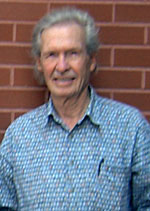The LB/FLINE Model of Universal Origins: From Superstrings to Planets
Year: 2007
The Little Bangs/FLINE concept (1973-2006) evolved in reverse order of the ongoing processes established by natural laws and sound logic. In 1973-1979, the definitive origin and intimate relationship of the hydrocarbon fuels (gas, oil, coal) (and all planetary matter) were established as products of internal nucleosynthesis (IN) that drives all evolution (E). In 1980-1995, the Fourth Law of Planetary Motion and Kepler's Three Laws confirmed the dynamic origin of our geometrically-spaced planets as nuclear masses that are evolving through five stages of evolution. In 2006, the Fourth Law was modified and reworded; the Fifth Law was established as a separate entity from the original Fourth Law. All Five Laws (FL) are now included in the FLINE model. Definitive evidence supplied by the FLINE revealed clues to the dynamic origin of galaxies that spew, from each pair of poles, hot gaseous dust-clouds embedded with nuclear energy masses of all sizes; the smaller ones eventually evolve into planets, usually in some solar-system fashion. From this first stage, planets will evolve via internal nucleosynthesis through four more stages of evolution: gaseous, transitional, rocky, and inactive. Black spheres (a.k.a. black holes) form continuously at the perimeter of our spherical universe at its interface with Dark Infinite Space at absolute zero. The dense, black spheres, the densest form of energy, and the starting point for nature's ongoing creations, consist of superstrings with which white-hot galaxies are spun: a black remnant remains at each galactic center to hold the system together.


